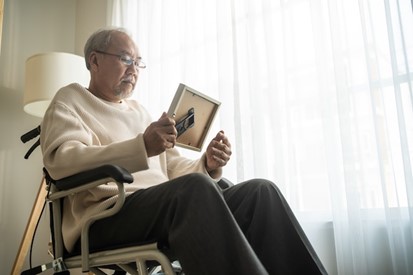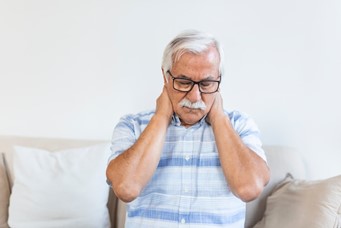Katha Knippa of Houston is an elderly advocate working within her local community to provide support and companionship to these vulnerable residents. In the following article, Katha Knippa discusses managing late-life depression, shedding light on its intricacies, potential causes, and avenues for support and treatment.
As the sun sets on a life rich with experiences, late-life depression emerges as a silent shadow, casting a shadow over the golden years. Contrary to common misconceptions, depression isn't an inevitable companion of aging; rather, it's a complex interplay of various factors that can cloud the twilight years.
Katha Knippa Discusses Understanding the Terrain: Late-Life Depression in Context
Late-life depression isn't a uniform experience, but a varied landscape influenced by numerous elements. It's essential to recognize that aging itself doesn't trigger depression; rather, it's the accumulation of life events, health issues, and social factors that contribute to its emergence. Chronic illnesses, bereavement, social isolation, and the daunting prospect of declining health become the brushes painting the canvas of late-life depression.
Chronic Illness as a Catalyst
A significant contributor to depression in the elderly community is the presence of chronic health conditions. As the body weathers the storms of time, ailments such as diabetes, arthritis, or heart disease can cast a long shadow on
mental well-being. Chronic pain, fatigue, and the daily struggle with compromised health become not just physical challenges but emotional burdens that can pave the way for depression.
Moreover, Katha Knippa of Houston explains that the side effects of medications used to manage chronic conditions can also play a role. Understanding the intricate relationship between physical and mental health is crucial in addressing late-life depression comprehensively.
The Weight of Loss: Bereavement and Grief
The senior years often intertwine with loss – the passing of lifelong companions, friends, or even children. Grieving becomes a recurring theme, and while mourning is a natural response,
prolonged grief can morph into clinical depression. The absence of a partner after decades of shared existence or the solitude left by departed friends can create an emotional void that contributes to the shadows of despair.
Katha Knippa of Houston says that it's essential to distinguish between “normal” grieving and clinical depression, as the latter often requires professional intervention. Understanding the nuances of grief and providing a supportive environment can be instrumental in helping individuals navigate the intricate path of loss without succumbing to the weight of sadness.
 Social Isolation: The Echoes of Silence
Social Isolation: The Echoes of Silence
Katha Knippa also notes that elderly depression often echoes in the chambers of solitude. The loss of a spouse or friends, coupled with physical limitations that impede social engagement, can lead to isolation.
The absence of meaningful social interactions and connections exacerbates the risk of depression. Retirement, while heralded as a time of leisure, can inadvertently become a period of disconnection from the social fabric, leaving individuals vulnerable to the snares of isolation-induced depression.
Recognizing the importance of social connections and actively fostering them can act as a potent antidote to the loneliness that fuels despondency. Encouraging participation in community activities, connecting with support groups, and embracing technology to bridge physical distances can weave a vibrant social tapestry that counters the shadows of isolation.
Fostering Mental Well-being: Practical Strategies
Creating an environment conducive to mental well-being in the senior years involves a combination of practical strategies and empathetic understanding. Here are some approaches to consider:
Open Communication: Breaking the Silence
Encourage open communication about feelings, fears, and concerns. Create a safe space for individuals to express their emotions without judgment. Honest conversations can be a cathartic release, lifting the veil of silence that often shrouds late-life depression.
Social Engagement: Weaving Connections
Actively promote social engagement. Katha Knippa of Houston says that this could involve participating in local clubs, volunteering, or attending community events. Fostering connections combats isolation and cultivates a sense of purpose and belonging.
Physical Activity: A Path to Well-being
Incorporate regular physical activity into daily routines. Exercise has been shown to have profound effects on mood, reducing the risk of depression. Katha Knippa explains that whether it's a daily walk, yoga, or gentle exercises, staying active is a key component of mental well-being.
Nutrition: Nourishing the Mind
Emphasize a balanced and nutritious diet. Certain nutrients play a crucial role in brain health, and deficiencies can contribute to depressive symptoms. A diet rich in fruits, vegetables, whole grains, and omega-3 fatty acids can support mental well-being.
Professional Support: Seeking Help
Katha Knippa of Houston says that it’s important to recognize the importance of professional support. Trained mental health professionals, including therapists and counselors, can provide tailored interventions to address the unique challenges of depression. Medication, when deemed appropriate, may also be part of the treatment plan.
 Treatment Options: Illuminating the Path to Recovery
Treatment Options: Illuminating the Path to Recovery
Katha Knippa of Houston says that navigating the complexities of late-life depression requires a multi-faceted approach. Treatment options may include:
Therapy: Unlocking Emotional Resilience
Psychotherapy, such as cognitive-behavioral therapy (CBT), can be highly effective in treating depression in the elderly. It helps individuals identify and change negative thought patterns, fostering emotional resilience and coping mechanisms.
Medication: Balancing Neurochemistry
Katha Knippa notes that antidepressant medications may be prescribed to rebalance neurotransmitters in the brain. It's essential to work closely with healthcare professionals to determine the most suitable medication, considering individual health conditions and potential side effects.
Electroconvulsive Therapy (ECT): A Specialized Intervention
In severe cases, where other treatments haven't yielded results, electroconvulsive therapy may be considered. ECT is a specialized procedure that involves controlled electrically induced seizures, and it's often reserved for cases where rapid and robust intervention is necessary.
Conclusion
Late-life depression, with its intricate tapestry of causes and consequences, requires a compassionate and informed approach. By understanding the unique challenges faced by aging individuals, fostering supportive environments, and embracing a comprehensive approach to treatment, we can collectively illuminate the path forward. The shadows of late-life depression can be dispelled, replaced by the warmth of understanding, connection, and the promise of a more resilient and vibrant twilight.
 Social Isolation: The Echoes of Silence
Social Isolation: The Echoes of Silence Treatment Options: Illuminating the Path to Recovery
Treatment Options: Illuminating the Path to Recovery